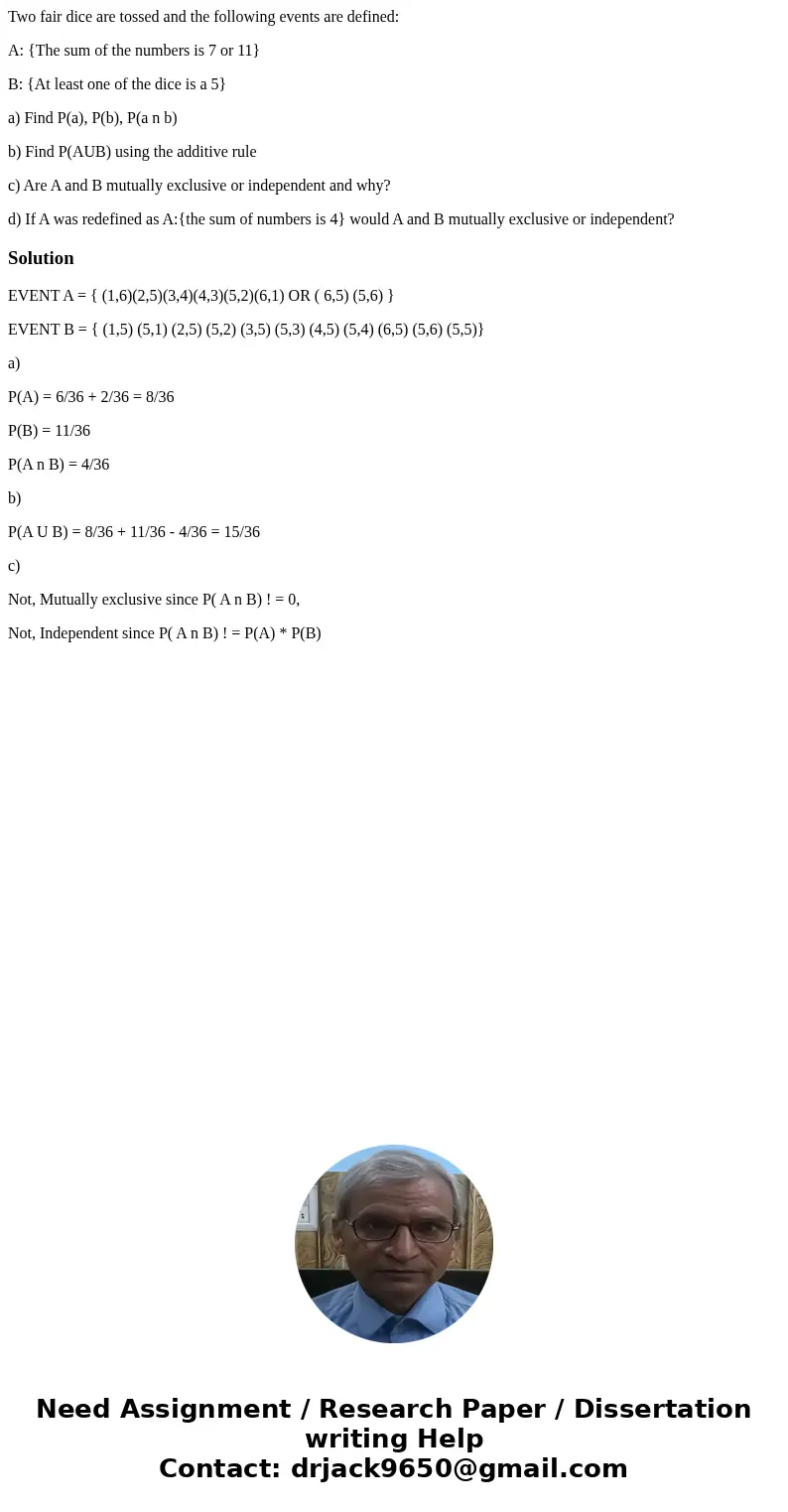Two fair dice are tossed and the following events are define
Two fair dice are tossed and the following events are defined:
A: {The sum of the numbers is 7 or 11}
B: {At least one of the dice is a 5}
a) Find P(a), P(b), P(a n b)
b) Find P(AUB) using the additive rule
c) Are A and B mutually exclusive or independent and why?
d) If A was redefined as A:{the sum of numbers is 4} would A and B mutually exclusive or independent?
Solution
EVENT A = { (1,6)(2,5)(3,4)(4,3)(5,2)(6,1) OR ( 6,5) (5,6) }
EVENT B = { (1,5) (5,1) (2,5) (5,2) (3,5) (5,3) (4,5) (5,4) (6,5) (5,6) (5,5)}
a)
P(A) = 6/36 + 2/36 = 8/36
P(B) = 11/36
P(A n B) = 4/36
b)
P(A U B) = 8/36 + 11/36 - 4/36 = 15/36
c)
Not, Mutually exclusive since P( A n B) ! = 0,
Not, Independent since P( A n B) ! = P(A) * P(B)

 Homework Sourse
Homework Sourse